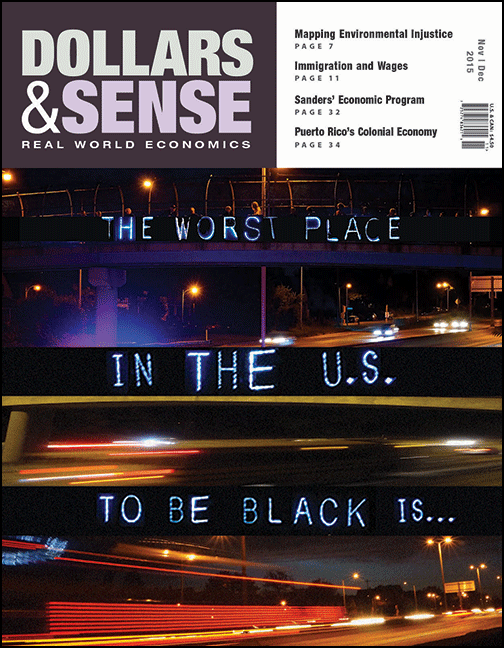Health Insurance for 20 Million is at Risk
If Congress fails to renew the ACA enhanced benefits, millions will be unable to access the health care they need.

... the home state of our new Speaker of the House.
Now that our November/December issue, with its cover story by D&S collective member and Milwaukee native Dan Schneider, is being shipped to subscribers (and the electronic version has been sent to e-subscribers), here is the issue's p. 2 editorial note:
That’s not a misprint. Wisconsin.
In our cover story, Dan Schneider looks at the figures and finds the state either worst or near-worst in the nation in terms of African-American unemployment, poverty, incarceration, child well-being, and other indicators. He doesn’t, however, stop there. He delves deeper, into the sharp lines of segregation (between Milwaukee and suburbs, within the city itself and, similarly, within other Wisconsin cities), the devastating impact of capital flight on black employment, and the current use of racial code-words in Wisconsin politics.
This issue’s Making Sense, “Mapping Environmental Injustice,” reminds us that issues of race, class, and the distribution of power in society are never far off, no matter what aspect of society we are looking at. Authors Klara Zwickl, Michael Ash, and James K. Boyce describe how—glaringly, if not surprisingly—the impacts of toxic air pollution fall along the contours of the American social hierarchy. Poor people tend to have higher exposure than rich people, and people of color tend to have higher exposure than whites.
Jeremy Brecher’s feature article, “A Superfund for Workers,” sticks with the environmental focus, as well as the attention to class. He argues that any policy response to the environmental challenges of our time—especially climate change—must mitigate any negative impact on workers. While environmental protection is a net job creator, Brecher notes, it would still cause some job losses in fossil-fuel producing and using industries. Protecting workers from the fallout is not only the right thing to do, but also the only way to head off concern-trolling “jobs vs. the environment” rhetoric.
In this issue’s Up Against the Wall Street Journal, John Millertakes up another pernicious myth—lately trumpeted by several presidential candidates—that immigrants are to blame for the general stagnation of wages. As Miller shows, current economic research on the subject offers precious little evidence to support this claim. Immigration means not only a greater supply of labor, but also more demand for it. And immigrants do not simply substitute for (and compete with) native-born workers, but often bring different and complementary skills.
All told, the news is not good, whether we’re talking about race, labor, the environment, or immigration. Part of the sorry state of affairs is not new, as David Kotz argues in “A Great Fall: The Origins and Crisis of Neoliberalism,” but the result of the “neoliberal capitalism” forged a generation ago. Sorry even when it was functioning fairly smoothly, and sorrier still now that it is in crisis. That crisis, however, is also an opportunity. New political movements, policies, and institutions are not forged, for the most part, when the old regime is functioning smoothly.
It’s during a crisis that the iron is hot.
This piece from Mic.com from back in March shows how different things could be in Wisconsin: 2 Years After Raising Taxes on the Rich, Here's the Hellscape Minnesota Has Become . Minnesota has done much better with high-road policies. And this segment from the Real News Network's Jessica Desvarieux with Ruth Conniff of The Progressive addresses Paul Ryan's record of "fighting" for the middle class and how bad it's been for his constituents back in Wisconsin.